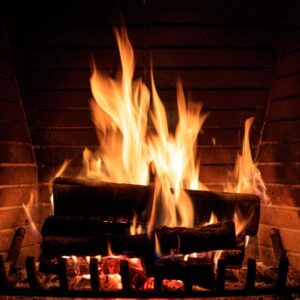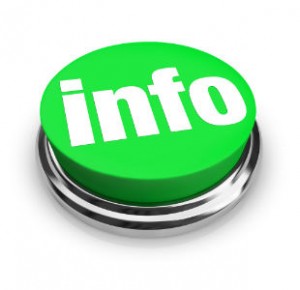URGENT!
Due to the weather, we are experiencing intermittent power outage and loss of internet. Please expect delays and or rescheduling of appointments during this time. We will reach out to you as soon as we can. Stay warm and stay safe!
 Managing the cleanliness of a chimney is an ongoing maintenance requirement for those who have wood burning fireplaces and stoves. It’s not just about looks, but about safety. Left alone, chimneys will begin to accumulate soot and creosote, as well as potential debris, and these can act as fire hazards and create issues with ventilation.
Managing the cleanliness of a chimney is an ongoing maintenance requirement for those who have wood burning fireplaces and stoves. It’s not just about looks, but about safety. Left alone, chimneys will begin to accumulate soot and creosote, as well as potential debris, and these can act as fire hazards and create issues with ventilation.
What exactly is creosote? It’s a dark, tarry substance that is produced as a result of burning wood or other organic materials. Creosote consists of various chemicals including tar, soot, and other volatile organic compounds – and it is highly combustible. Untended, it drastically increases the risk of chimney fires and can eventually find its way into your living space. Over time, it becomes more stubborn and difficult to get out of your chimney. Thus, the necessity of having it frequently removed.
Enter the creosote burning log. This is a product designed to help keep your chimney cleaner. But does it work?
Creosote burning logs, also marketed as “chimney cleaning logs” or “creosote sweeping logs,” are specially formulated logs that claim to reduce or eliminate creosote buildup in chimneys and stovepipes. They are typically made from a combination of sawdust, paraffin wax, and other additives and work as a chemical cleaner.
When burned in a wood burning appliance, the chemicals they release are designed to react with creosote and help break it down. The idea is that this chemical attack will make creosote loose, flaky, and easy to remove.
So, do creosote logs live up to the hype? The answer is a qualified yes – in other words, it is effective in some ways, but you will want to be sure you’ve managed your expectations. If you’re expecting a totally clean chimney with no other effort expended, you’ll be disappointed. However, creosote logs do have an effect on creosote.
As a chemical cleaner, creosote logs will do some work at making creosote more removable and cause some – maybe much – of the creosote to flake away. Because creosote is tough, this can be a really useful step towards a clean flue!
But it won’t actually remove or stop creosote from forming. You’ll have to give due diligence to carefully removing any flaked creosote from your firebox, flue, smoke chamber, or thimble area, since it can be a hazard in your home environment.
And keep in mind that since burning a creosote log becomes an unguided process, once the smoke starts moving up the flue, you don’t have control over where flaked creosote goes or how much is removed. It can drift into bends or other hard-to-access areas of your chimney system, possibly moving – but not eliminating – the problem.
Creosote burning logs should never be viewed as a substitute for professional chimney sweeping. While they may help reduce creosote buildup to some extent, they aren’t a comprehensive solution to chimney maintenance. Having an experienced, CSIA certified technician sweep your chimney remains essential because:
Creosote burning logs are deemed safe for use in your fireplace by the Chimney Safety Institute of America (CSIA). But while they offer some benefits in terms of reducing creosote buildup – and aren’t hazardous in themselves – it can be hazardous to put too much faith in them and therefore overlook their limitations.
 One such limitation is their overall effectiveness. The efficacy of creosote burning logs can vary depending on a number of factors, such as how often you use your fireplace, the type of wood burned, appliance design, and chimney configuration. If heavy buildup is already present or creosote is of a particularly stubborn composition, these logs may not effectively break it down. And without a careful assessment, it will be nearly impossible to know whether burning the log has been adequately successful or not. And if it hasn’t, the risks remain in play.
One such limitation is their overall effectiveness. The efficacy of creosote burning logs can vary depending on a number of factors, such as how often you use your fireplace, the type of wood burned, appliance design, and chimney configuration. If heavy buildup is already present or creosote is of a particularly stubborn composition, these logs may not effectively break it down. And without a careful assessment, it will be nearly impossible to know whether burning the log has been adequately successful or not. And if it hasn’t, the risks remain in play.
Keep in mind as well that while creosote logs are formulated to attack creosote, they aren’t necessarily removing any other type of blockage. So if leaves, twigs, or other types of debris have made their way into your flue, burning a creosote log won’t address these and lead to safe ventilation.
While the accumulation of creosote is accelerated by burning firewood that’s not properly seasoned (such as damp or green wood), even clean-burning wood fires will eventually contribute to build up because combustion will never be one hundred percent complete each time. So for those who use wood-burning appliances, diligent removal will be the best strategy for managing creosote.
Burning creosote logs can offer a supplementary approach to reducing creosote deposits in chimneys and stovepipes, but they can’t replace professional maintenance, including your chimney sweeping. Homeowners should continue to prioritize regular chimney maintenance – think inspections and sweepings – performed by certified professionals to help mitigate risks, maintain efficiency, and protect their investment in their home.
If you need chimney care, book with Lords Chimney today by calling or reaching out online. We’ve got your back.
If you walk down the aisles of your neighborhood big box home improvement store, you are bound to see a wide variety of products designed to help homeowners clean and maintain their fireplaces. While some of these products can be useful, they should not be used to replace regular annual chimney maintenance by a certified chimney sweep.
One such product that our customers regularly ask about are “chimney cleaning logs”. Sold for less than $20 at many home improvement stores, chimney sweeping logs advertise their ability to significantly reduce creosote buildup in the chimney. Because of this, some homeowners purchase and burn these products as their only form of chimney maintenance, patting themselves on the back for saving money on a chimney sweep.
Despite their advertising claims, these logs are no replacement for a professional chimney cleaning. Although they may be able to remove some creosote buildup, there are a number of ways that they are deficient at maintaining the health and safety of your fireplace system.
The primary purpose of a chimney cleaning log is the removal of creosote; the smoke from the log loosens the creosote and causes it to fall down the flue and into the firebox, where it can be safely swept up and removed.
In theory, this is an excellent system. Unfortunately, the reality leaves much to be desired.
Most flues are not a straight vertical line between your firebox and the top of the chimney. Depending on your fireplace’s location, your flue may have one of more curves and bends in it. When this happens, the loosening of creosote by the chimney cleaning log merely causes it to fall and accumulate in the bends of the flue. This may not only block the flue, but can also create a significant fire hazard. Even fireplaces without curved flues may wind up with the majority of the creosote trapped on the smoke shelf, which can be difficult to access and clean without proper training.
While a chimney cleaning log may be useful in loosening creosote, it is no substitute for the services performed by a certified chimney sweep.
“I usually tell people using one of those logs instead of having your chimney cleaned manually is like chewing Dentyne instead of brushing your teeth,” said Allan Bopp of Bald Eagle Enterprises. “It may help a little, but it’s a poor substitute for the real thing.”
Likewise, a chimney cleaning log has no way to know or tell you if your chimney is damaged in any way. There are a number of hidden issues such as cracked flue liners, decaying masonry, or damaged chimney caps or crowns that can only be spotted by a sweep during a chimney inspection. Because many of these chimney issues do not affect performance, you may have no idea there is even an existing issue.
Don’t trust the health of your chimney or the safety of your family to a $20 log bought at a big box store. Instead, have an annual chimney sweeping and rest assured that you can safely use your fireplace for the rest of the year. Contact Lord’s Chimney today to schedule an appointment!
We know you care about keeping your family safe. One way to keep your family safe while at home is to minimize the likelihood of a deadly chimney fire. One way to minimize this risk is to make sure you do not allow creosote to accumulate.

Creosote is no laughing matter. The professionals at Lords Chimney can provide you with a wealth of information and service to give you that added peace of mind!
For homeowners with chimneys, there is one other thing that they worry about specifically – creosote. According to our team of experts here at Lords Chimney, more than 70% of the inquiries and concerns we receive from our loyal customers involve creosote in some form or fashion. So what exactly is creosote anyway?
If you look online you’ll see a lot of definitions filled with scientific jargon that would just confuse you a lot more than you may already be. But the definition from the Agency for Toxic Substances and Disease Registry describes and defines creosote in a simple and uncomplicated way. According to the ATSDR, creosote is basically the chemical byproduct of burning. There are different varieties of creosote. There’s the Wood, Coal Tar Pitch, Coal Tar Pitch Volatiles and Coal Tar. But basically they are all referred to collectively as creosote.
Although seemingly harmless during the beginning stages, creosote can quickly become extremely dangerous when left alone. You see, since it is a byproduct of burning, this means that it would constantly be produced whenever there’s burning of any kind in your chimney system. Once it is produced, it sticks to various parts of the fireplace and chimney. If it accumulates further, it becomes this thick volatile layer that is one of the number one culprits of chimney and house fires.
The best thing we can do to prevent things from getting out of hand is to properly maintain your chimney. Schedule regular inspections and cleanings to make sure that creosote build-up never gets a chance to reach threatening levels, which, in turn, would guarantee safety for your home and your family. So what are you waiting for? Pick up a phone and schedule an appointment right now. You can count on us for quality and dependable chimney and fireplace services. Lords Chimney is ready to help!
Everything You Need to Know About Creosote
What is Creosote?
Creosote is a chemical byproduct that is produced after the distillation of tar. So when wood is burned, creosote is produced. It is known for its preservative properties and for being anti-septic. There are basically two types of creosote; the wood-tar, and the coal-tar. The wood-tar creosote, being less toxic, is commonly used in meat preservation, wood treatment and for medicinal purposes. When used medicinally, it is commonly utilized as an astringent, anesthetic, expectorant, laxative and anti-septic. The coal-tar creosote is more commonly used in wood preservation because of its toxic properties.

In its early stages of accumulation, creosote is flaky. As it left to build…it becomes more tar-like. All creosote is highly flammable.
Creosote in Chimney
There are several stages that the creosote in your chimney that you may experience. First is its’ soot: a flaky form that is easy to remove leaving the flue walls unobstructed. Second: the stage where it leaves brittle and hard deposits that are a bit more difficult to remove. The third is the glazed stage where it becomes dangerous and much more difficult to remove. Once you notice the dense, dark and shiny tar-like appearance, then this would indicate that the creosote has reached its glazed stage. There will always be some level of creosote in your chimney – as it is a natural byproduct of burning, but it doesn’t need to be left to accumulate.
Possible Dangers
The longer creosote is ignored…the greater the possible danger. Creosote is highly flammable and is a leading cause of chimney fires. You may see products, such as a log that is supposed to remove creosote while burning. Not only is this difficult to gauge in its effectiveness, it may also cause chunks of creosote to fall down your flue and get stuck along the way. Because of the fire risk, you should leave creosote removal to a professional.
Preventive Measures
To avoid higher risk for a catastrophe, don’t wait for your chimney to reach a disastrous level of creosote build-up. It is best to schedule regular chimney inspections and sweeping on an annual basis. This way you know you are not letting the buildup become a hazard. This also prolongs your chimney’s lifespan.
We hope that this has been helpful and sufficient in answering your questions about creosote. So now you are fully equipped with the knowledge to better protect and improve your home. If you have a chimney, make sure to have it checked regularly and make it a habit to schedule a regular inspection and sweeping by a chimney professional.